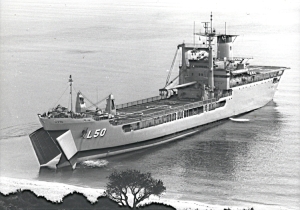- Author
- Midson, D.W., BSc LLB (Hons), Acting Sub Lieutenant, RAN
- Subjects
- Ship design and development
- Tags
-
- RAN Ships
- HMAS Stalwart II, HMAS Tobruk II
- Publication
- March 2011 edition of the Naval Historical Review (all rights reserved)
The ADF has been accused in other incidents of putting platforms before people and the inquiry suggests this in the case of Tobruk. Fortunately it appears that this lesson is being learnt; in relation to H2S the RAN now has strict procedures in place for managing sewerage systems. Whilst systems are improving there is always room to improve safety; a timely reminder was the non-lethal toxic hazard incident aboard HMAS Maitland in 2007 where several personnel were injured due to faulty operations in a sewerage plant. In more general terms the lesson of putting people before platforms has most recently been reinforced by the New Generation Navy initiative.

Image courtesy of RAN
Conclusion
H2S toxic hazards present a clear danger to the RAN, they can and do occur through both war and peace, and the nature of the hazard makes them both hard to detect and lethal. Since international obligations have, as a side effect, created H2S problems for the RAN there has been much work to minimise the risk. Each time there is a toxic hazard incident it is devastating, especially for those personnel directly affected, but it is also a chance for the RAN to improve its practice and minimise the dangers.
This paper highlighted only two incidents from many in the RAN, aboard Tobruk and Stalwart. The Tobruk incident provided new impetus to better managing the design and construction of HMA Ships and the care needed in designing sewerage systems. The tragedy aboard Stalwart caused the RAN to fit H2S detection devices and change the procedures for how H2S victims are rescued, procedures that no doubt save lives today. It is important for the RAN to continue to improve the capability to deal with toxic incidents. This can be done through research but it is also achieved through continual learning. It continues in the RAN today as lessons are learnt from the recent HMAS Maitland incident. Whilst the danger of H2S cannot be escaped, vigilance and willingness to accept and learn from past tragedies stands the RAN in good stead to minimise the risks.




